








U.S. Navy Veterans(Brief Naval History - Operation Torch)Preparation - Assault Forces In
January 1941 a Combined Training Centre was created under Captain J.
Hughes-Hallett at Inveraray, Argyll, Scotland and another at Kabrit in
Egypt in the canal zone. No fewer than 5000 officers and ratings had
been assigned to the manning of landing craft. This new role for the
Royal Navy was somewhat disdained by the sea-going Navy who saw it as
an undesirable diversion in their traditional career paths. Most were
desperate to get back to sea duty. The initial training was hard,
rigorous and realistic since it was essential that the landing craft
crews were thoroughly proficient before they worked with soldiers on
joint exercises. This was essential if the Army was to retain its
traditional unquestioning faith in the Royal Navy's seamanship. The
naval beach parties were selected and trained particularly carefully
for theirs was the job of going ashore with the first assault wave and
organizing the orderly flow of men and stores into the beachhead. On
the American side, the complex requirements of successful landings on
hostile shores had for several years been studied in a series of
exercises employing elements of the Navy, the Marine Corps, and the
Army. Joint training forces, uniting the 1st Infantry Division with the
1st Marine Division on the Atlantic coast and the 3d Infantry Division
with the 2d Marine Division on the Pacific coast, provided in 1941 some
advanced training for units of two Army divisions which were later to
participate in Operation TORCH. An elaborate full-scale exercise at New
River, North Carolina, with air and naval support had been planned for
December 1941. The U-boat menace caused it to be abruptly transferred
to the southern shores of Chesapeake Bay, Solomons Maryland and other
places, where the many deficiencies revealed by the exercise made
apparent the necessity of improved and amplified training. The 9th
Infantry Division began amphibious training early in 1942, taking the
place formerly held by the 1st Infantry Division, which soon afterward
moved to the United Kingdom. *Many of the veterans interviewed here
took amphibious training at both New River North Carolina, and Solomons Maryland. Command Structure and Resources The landing forces were divided into: Western Assault Force: Major-General George S. Patton, 35000 American troops. Objective Casablanca in French Morocco. Central Task Force: Major-General Lloyd R. Fredendall, 18500 American troops building up to 39000. Objective Oran. Eastern Task Force: Lieutenant-General K.A.N. Anderson, 20000 troops in the first wave, half American and half British. Objective Algiers. All these commanders reported directly to Eisenhower. The Naval Task forces were: Western Naval Task Force: All United States Navy vessels. 3 battleships, 5 carriers, 7 cruisers, 38 destroyers, 8 fleet minesweepers, five tankers commanded by Rear Admiral H. Kent Hewitt with an accompanying Assault Force of 91 vessels including 23 'combat loaders' same as LSIs. Central Naval Task Force: Under Commodore T H Troubridge with the Largs, 2 carriers, 2 cruisers, 2 anti-aircraft ships, thirteen destroyers, six corvettes, eight minesweepers and various ancillary craft as well as the landing force. Eastern Task Force: Under the command of Vice-Admiral Sir Harold Burrough with the Bulolo, 2 aircraft carriers, 3 cruisers, 3 anti-aircraft ships, a gun monitor, 13 destroyers, 3 submarines, 3 sloops, seven minesweepers and seven corvettes. As well as the landing forces.. All three Naval Task Forces were under the direct command of Admiral Cunningham. Condensed Source Material: Geoff Slee George F. Howe 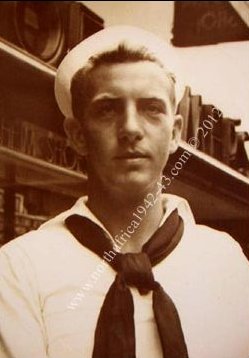 Gene E. Johnson Gene
Johnson was the first Navy veteran I located in 2005. He was gunner-loader on the forward 3" gun on the Thomas Stone when it was
torpedoed November 7th 1942. Gene and I had some
interesting telephone conversations before I finally met him in September 2008. Gene had been suffering from ill health. This would be my first of many trips to the
Mid West to visit veterans. His wife Jean was very
loving and helpful. I also received assistance from son Gary. Some of Gene's
recollections: "After we got washed up on the
beach the bombing and strafing continued day and night. One morning
after a nasty air raid, I remember seeing a HUGE hole in
the lower hull and could see an unexploded bomb lodged in the sand. It
was unbelievable!" The most amazing of Gene's experiences
was the fact that he survived the bombing and torpedo attack of #3
different ships; the West Virginia sunk at Pearl Harbor in 1941,
the USS Lexington sunk in the Coral Sea in 1942, and the torpedo attack
and bombing of the USS Thomas Stone in North Africa 1942-43. Gene
passed away September 28, 2008.
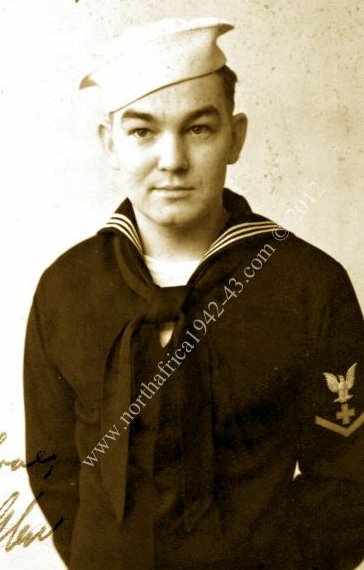 Glen Kile Interview December 2008; I was put in touch with Glen Kile through son David who posted an inquiry on the Thomas Stone Guest Book. Glen
was a Pharmacists Mate on the Thomas Stone. He recalled the torpedo
strike: "I was just forward of the impact area, when it struck. We were
thrown off our feet and everyone wondered if the ship was
going to sink. The torpedo just missed the ammunition magazine. Just 10
or 20 feet more and we would have all perished. During that time period
there were continual air raids, day and night. The German pilots
preferred coming in high during the glow of a full moon. It was
frightening to see these JU88's come in. They'd strafe the deck,
and drop bombs. We had our guns blazing most of the time
but were crippled and lost the protection of the
inner harbor.
One bomb came in and dropped through #3 decks, (without detonating), it
was a miracle. As
if this wasn't enough, the ship was rocked by a storm of almost
Hurricane strength. The winds and current were so strong, we dragged
two anchors and kept getting closer to land. Even with the help
of two English destroyers, pulling with tow lines, we were
eventually pushed right onto the beach."
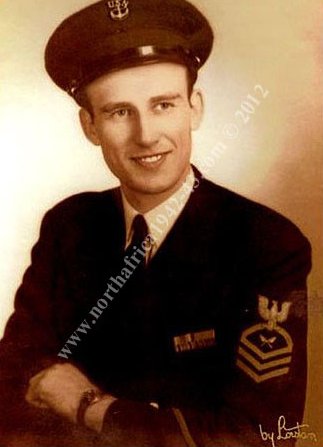 Stanley M. Lucas Stanley M. LucasStanley Lucas, (interview December 2008). Stanley was a Captain's Yeoman aboard the USS Thomas Stone. My discovery of Mr. Lucas was also from the Thomas Stone Guest Book. Daughter
Marcia, and son Michael were instrumental in coordinating the
interview. Our meeting provided a unique opportunity to acquire rare
personal memorabilia not available at the Nat'l Archives. Apparently
there were several reunions that were organized after the war. One such
event took place in 1960 in New York City. I was able to copy an old
newsletter which greatly helped my search for any surviving veterans.
Mr. Lucas related some very interesting stories about Algiers, North
Africa, and the Thomas Stone: "We were all called 'Johnny' by the Arabs who
constantly begged for cigarettes and booty from Americans. One time I
was approached, 'Johnny got cigarettes?'
'Johnny got cigarettes?' I reached inside my peacoat to pull out a
cigarette and gave it to the Arab. When I got back on ship, I realized
the Arab took money that was in my pocket. So I came up with a plan
to get my money back; I had the ship's carpenter cut a small plank
of wood to fit into a carton of cigarettes and disguised the carton
with one pack at the end. When I went back, I sold the Arab the false
carton for the same amount of money that was stolen."
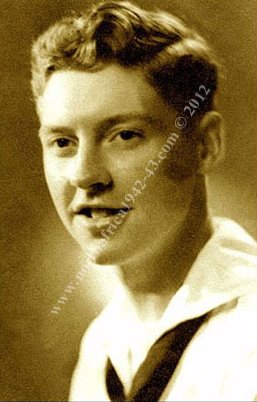 Robert D. Lyst Bob Lyst, (interview December 2008), was also a Pharmacist's Mate aboard the USS Thomas Stone.
I was introduced to Bob through his friend and ship mate, Glen
Kile. Bob was ailing from cancer treatments when I contacted him. Son
Ron helped set up the interview and his Dad was very pleased to see
me. With Bob's stories I was beginning to get a better picture of
Captain Bennehoff. Respected by most but sometimes equally disliked,
Bennehoff was a strict ex-mariner who stood 5' tall. Bob also recalled the torpedo
strike: "All of a sudden, I was thrown up in the air from my bunk. We
found out later, the ship wasn't going to sink but we were helpless
in the water." Special thanks to Rich Grillone.
Robert Lyst passed away August 27, 2009 and will be sorely missed.
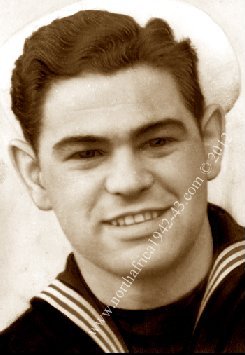 Harry Owings Klein Harry Klein, (interview May 2009), was a signalman aboard the USS Thomas Stone. He trained at Solomons Island MD, not far from where he lived. He recalls the violent storm which pounded the ship: "It was terrible, the ship was rocked so bad, rivets were popping. We didn't know whether the ship would remain upright or not. I remember hearing the pounding on the ship's hull." Harry Klein also revealed another story which would collaborate the Captain's strict disciplinary practices: "I had sort of a baby face when I was in my twenties and some of the guys called me 'babe'. Only problem was, I had a habit of smiling all the time. Well that didn't go very well with Captain Bennehoff. I think he thought I was smiling disrespectfully. Next thing I know, I was brought up on Captain's Mast." The most memorable part of our conversation was when Mr. Klein addressed a long unanswered question regarding my father's HQ station on the flying bridge. Harry Klein distinctly remembers the 20mm guns to either side of the flying bridge. His GQ duty was to have signaling flags ready while the gunners were directly next to him. Turns out, my father was probably on the 20mm gun right next to Harry Klein. Harry passed away February 27, 2012. 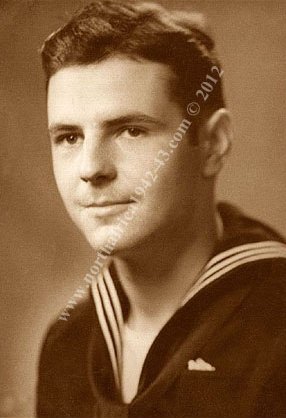 Frank L. Rush II Frank
Rush, (interview Feburary 2009), was made possible with the help of son
Frank. Mr. Rush, ship's cook 2nd class, was also a loader on
the 20mm on the Thomas Stone. He distinctly remembers the German air raids day and night:
"We had one guy who was so scared he pounded his fists on the deck of
the ship, praying out loud, looking terrified up in the sky. Another
guy actually froze in panic, clutching at my legs. He was supposed to
be passing the 20mm magazines back to me as we tried to keep the guns
going. We were under the ladder and I couldn't move, trying to shake
this guy off. I shouted; "pull yourself together man!", and he finally
let loose." Frank
had some very interesting memorabilia which included a unique photo of
the beached ship taken from the shore. Frank L. Rush passed away May 15,
2012.
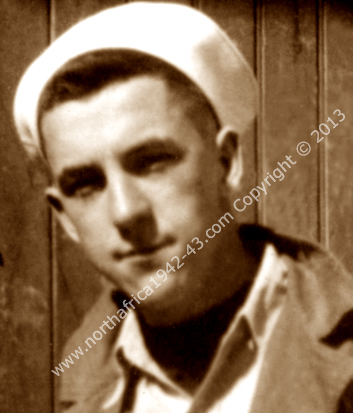 Robert E. Flick Bob Flick, (interview April 2013), was a 'striker' aboard the USS Joseph Hewes.
It would be years before he could talk about the tragedy of being on
the ship when it was torpedoed and sunk off the coast of Fedala
North Africa November 11th 1942. The ship went down and took 100 men with her including the captain. Bob had just taken a shower and was looking forward to some rest after a busy day unloading troops. The landing craft operation didn't go well as many of the LCV's hit rocks, damaged and were sunk. "There was a terrible explosion as I was knocked off my feet. I don't know how I was able to climb my way out and get into the water. After swallowing diesel oil, I somehow got into a life raft as I heard cries for help in the night. I don't know what happened to my mates, I don't know if they survived. Much to my relief, I was finally picked up". There were a total of #5 transports sunk during Operation Torch. Special thanks to son-in-law, Army Ret. Tom Leonard. Photos and memorabilia provided by the veterans and their families. This independent documentary is not intended to be a comprehensive account of the war in North Africa 1942-43. The completed film will feature rare interviews from veterans connected to the story. The search to locate veterans within this time frame was very difficult. With no funding and a small film crew who sporadically assisted with re-creations, the bulk of production falls upon one individual. Contributions of any kind are welcomed. northafricaww2survivors@gmail.com Photos, illustrations, art work or interviews may not be reproduced, copied, stored, manipulated or redistributed without the expressed permission of the author. Michael Fraticelli - North Africa 1942-43 Survivors' Stories © 2015 |
